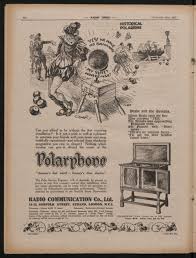Understanding the Impact of Radio Times in Media Culture

Introduction
As one of the UK’s most iconic publications, Radio Times holds a significant place in the landscape of television and radio broadcasting. Since its inception in 1923, the magazine has provided audiences with comprehensive listings and insights into the world of entertainment. In an era where streaming services are changing how viewers consume media, understanding Radio Times helps to reflect on the evolution of broadcasting and its continued relevance.
The Legacy of Radio Times
Founded by the BBC in 1923, Radio Times was created to offer listeners the information they needed to enjoy their favourite programmes. Initially printed weekly, the magazine quickly became synonymous with broadcasting in Britain. Its reputation as a trusted source of information allowed it to thrive, particularly during significant events such as the Second World War, when people relied heavily on radio transmissions.
Over the decades, Radio Times transitioned from primarily focusing on radio to encompassing television coverage, especially as television gained widespread popularity in the 1950s and 1960s. The magazine became known for its engaging features and coverage of British television culture, assisting viewers in navigating the growing number of channels and programming options.
Current Trends and Challenges
Today, Radio Times continues to adapt to the rapid changes within the media industry. Digital transformation has led to the magazine expanding its online presence, providing real-time updates and news about television shows and radio broadcasts on their website. With an increase in on-demand streaming platforms like Netflix and Amazon Prime, Radio Times competes to remain relevant. This includes offering not just listings but also original content such as reviews, interviews, and editorial pieces reflecting societal changes and viewer preferences.
The recent rebranding efforts, including a refreshed website and enhanced social media strategy, are designed to attract a younger audience while retaining long-time readers. The magazine has also expanded its content by featuring more diverse programming, ensuring representation reflects modern society.
Conclusion
Radio Times is not merely a magazine with listings; it is a cultural institution in British media. Its adaptation to the evolving broadcasting landscape demonstrates its commitment to serving audiences well into the future. As media consumption patterns continue to evolve, Radio Times remains a critical touchstone for both nostalgia and contemporary viewing habits. The publication’s ability to embrace change while maintaining its legacy will likely keep it a staple in households across the UK for years to come.
